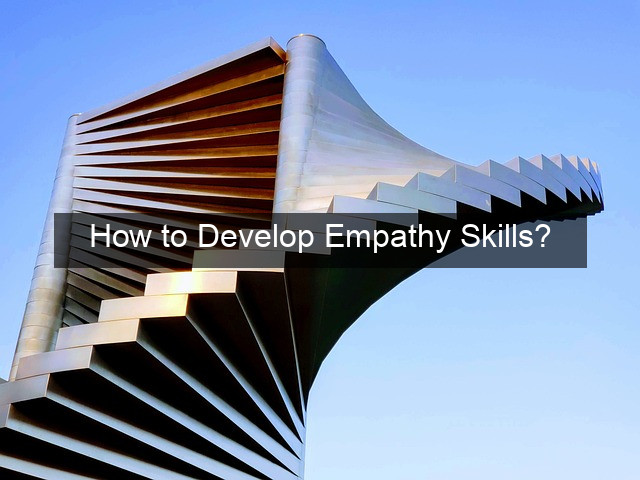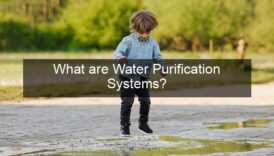How to Develop Empathy Skills?

- How to Develop Empathy Skills?
- How to Develop Empathy Skills?
- Understanding the Foundations of Empathy
- Recognizing the Importance of Empathy
- Identifying Your Current Level of Empathy
- The Components of Empathy: Cognitive and Emotional
- Practical Strategies for Developing Empathy
- Active Listening and Observation
- Reading Fiction and Engaging with Diverse Perspectives
- Practicing Perspective-Taking and Challenging Your Biases
- Putting Empathy into Action
- Volunteering and Community Involvement
- Engaging in Meaningful Conversations
- Conclusion

How to Develop Empathy Skills?
In today’s fast-paced world, it’s easy to get caught up in our own lives and forget about the experiences and feelings of others. But cultivating empathy—the ability to understand and share the feelings of another person—is more crucial than ever. Empathy allows us to connect with people on a deeper level, build stronger relationships, and navigate social situations with greater ease and understanding. It fosters collaboration, reduces conflict, and promotes a more compassionate and supportive environment, both personally and professionally. This article will explore practical steps you can take to develop and strengthen your empathy skills.
Understanding the Foundations of Empathy
Recognizing the Importance of Empathy
Empathy is the cornerstone of strong interpersonal relationships. It allows us to perceive the world from another person’s perspective, fostering understanding and compassion. When we empathize with someone, we acknowledge their emotions and experiences as valid, even if we don’t necessarily agree with them. This validation creates a sense of trust and strengthens the bond between individuals. Empathy is essential for effective communication, conflict resolution, and building a supportive community.
Beyond personal relationships, empathy plays a vital role in professional settings. Leaders who demonstrate empathy are better equipped to understand their team’s needs and motivations, leading to increased productivity and job satisfaction. In customer service, empathy helps build rapport and resolve issues effectively. In healthcare, empathy is crucial for providing patient-centered care and building trust between patients and providers.
Developing empathy is not an innate ability; it’s a skill that can be learned and honed over time. By consciously practicing empathy-building techniques, we can enhance our ability to connect with others on a deeper emotional level, leading to more fulfilling relationships and a greater sense of belonging.
Identifying Your Current Level of Empathy
Before embarking on a journey to enhance your empathy, it’s crucial to assess your current level. Self-reflection is a powerful tool for identifying areas where you excel and areas where you can improve. Consider how you typically react in social situations. Do you actively listen to others, or are you preoccupied with your own thoughts? Do you try to understand different perspectives, or do you tend to judge others based on your own experiences? Honest self-assessment is the first step towards meaningful growth.
Another helpful method for gauging your empathy is to seek feedback from trusted friends, family members, or colleagues. Ask them how well they feel you understand their emotions and perspectives. Be open to constructive criticism and use their feedback as a guide for your development. Remember, developing empathy is a continuous process, and seeking external input can provide valuable insights.
Understanding your baseline level of empathy provides a starting point for your development journey. It allows you to tailor your efforts and focus on specific areas that require improvement. This self-awareness is crucial for making tangible progress and cultivating deeper connections with the people around you.
The Components of Empathy: Cognitive and Emotional
Empathy is a multifaceted skill encompassing both cognitive and emotional components. Cognitive empathy involves understanding another person’s perspective and mental state, often referred to as “perspective-taking.” It requires actively listening and trying to see the world through their eyes, even if you don’t share their experiences. This intellectual understanding forms the basis for genuine connection.
Emotional empathy, on the other hand, involves sharing another person’s feelings. It’s about experiencing their emotions as if they were your own, creating a sense of shared emotional experience. This emotional resonance strengthens the bond between individuals and allows for deeper understanding and compassion. Both cognitive and emotional empathy are essential for building strong relationships.
Developing both cognitive and emotional empathy requires conscious effort and practice. By actively engaging in perspective-taking and cultivating our emotional intelligence, we can strengthen our ability to connect with others on a deeper, more meaningful level. This holistic approach to empathy development leads to more fulfilling relationships and a greater sense of shared humanity.
Practical Strategies for Developing Empathy
Active Listening and Observation
Active listening is a cornerstone of empathy development. It involves fully concentrating on what the other person is saying, both verbally and nonverbally. Pay attention to their words, tone of voice, body language, and facial expressions. Ask clarifying questions to ensure you understand their message fully and avoid interrupting or formulating your response while they are still speaking.
Observation also plays a crucial role in understanding others. Pay attention to how people interact with each other and their environment. Notice their reactions to different situations and try to understand the underlying emotions driving their behavior. By observing others carefully, you can gain valuable insights into their thoughts and feelings.
Practicing active listening and observation helps you gather information about others’ perspectives and emotional states. This information is crucial for developing both cognitive and emotional empathy, allowing you to connect with others on a deeper level and build stronger, more meaningful relationships.
Reading Fiction and Engaging with Diverse Perspectives
Reading fiction can be a powerful tool for developing empathy. Immersing yourself in the lives of fictional characters allows you to experience the world from different perspectives and develop a deeper understanding of human emotions. By stepping into the shoes of characters who are different from us, we can broaden our understanding of the human experience.
Engaging with diverse perspectives through books, movies, documentaries, and other forms of media exposes us to different cultures, backgrounds, and experiences. This exposure challenges our assumptions and biases, fostering greater understanding and tolerance. Actively seeking out diverse voices can broaden our worldview and enhance our ability to connect with people from all walks of life.
By regularly engaging with diverse narratives and perspectives, we can expand our capacity for empathy. This allows us to connect with others on a deeper level, appreciate their unique experiences, and build a more inclusive and compassionate world.
Practicing Perspective-Taking and Challenging Your Biases
Perspective-taking involves consciously trying to see the world through another person’s eyes. It requires setting aside your own biases and assumptions and considering their experiences, beliefs, and values. Ask yourself, “What might be going through their mind right now? What factors might be influencing their perspective?” This conscious effort to understand others is crucial for developing cognitive empathy.
Challenging your biases is an essential part of developing empathy. We all have biases, conscious and unconscious, that shape our perceptions of others. By acknowledging and challenging these biases, we can become more open-minded and receptive to different perspectives. This process requires self-reflection and a willingness to examine our own beliefs and assumptions critically.
Regularly practicing perspective-taking and challenging your biases helps you break down barriers to understanding and connect with others on a deeper level. This leads to stronger relationships, improved communication, and a more compassionate and inclusive worldview.
Putting Empathy into Action
Volunteering and Community Involvement
Volunteering and engaging with your community provides opportunities to interact with people from diverse backgrounds and circumstances. By offering your time and support to others, you gain firsthand experience of their challenges and triumphs, fostering greater understanding and compassion.
Community involvement also allows you to witness the impact of empathy in action. Seeing how acts of kindness and understanding can positively affect others reinforces the importance of cultivating this essential skill. It inspires you to continue developing your empathy and making a difference in the lives of others.
Actively participating in your community and volunteering your time are valuable ways to put your empathy into practice. These experiences provide real-world opportunities to connect with others, broaden your perspective, and make a positive contribution to the world around you.
Engaging in Meaningful Conversations
Engaging in meaningful conversations involves going beyond superficial small talk and delving into deeper topics. Ask open-ended questions that encourage others to share their thoughts, feelings, and experiences. Listen attentively to their responses and show genuine interest in what they have to say.
Creating a safe and non-judgmental space for conversation is essential for fostering empathy. Avoid interrupting or offering unsolicited advice. Instead, focus on understanding their perspective and validating their emotions. This creates a sense of trust and encourages deeper connection.
By engaging in meaningful conversations and actively listening to others, you can strengthen your empathy skills and build stronger, more fulfilling relationships. This creates a more compassionate and supportive environment for both yourself and those around you.
Conclusion
Developing empathy is a lifelong journey that requires conscious effort and practice. By actively engaging in the strategies outlined in this article, you can strengthen your ability to connect with others on a deeper level, build stronger relationships, and navigate social situations with greater ease and understanding. Culti


